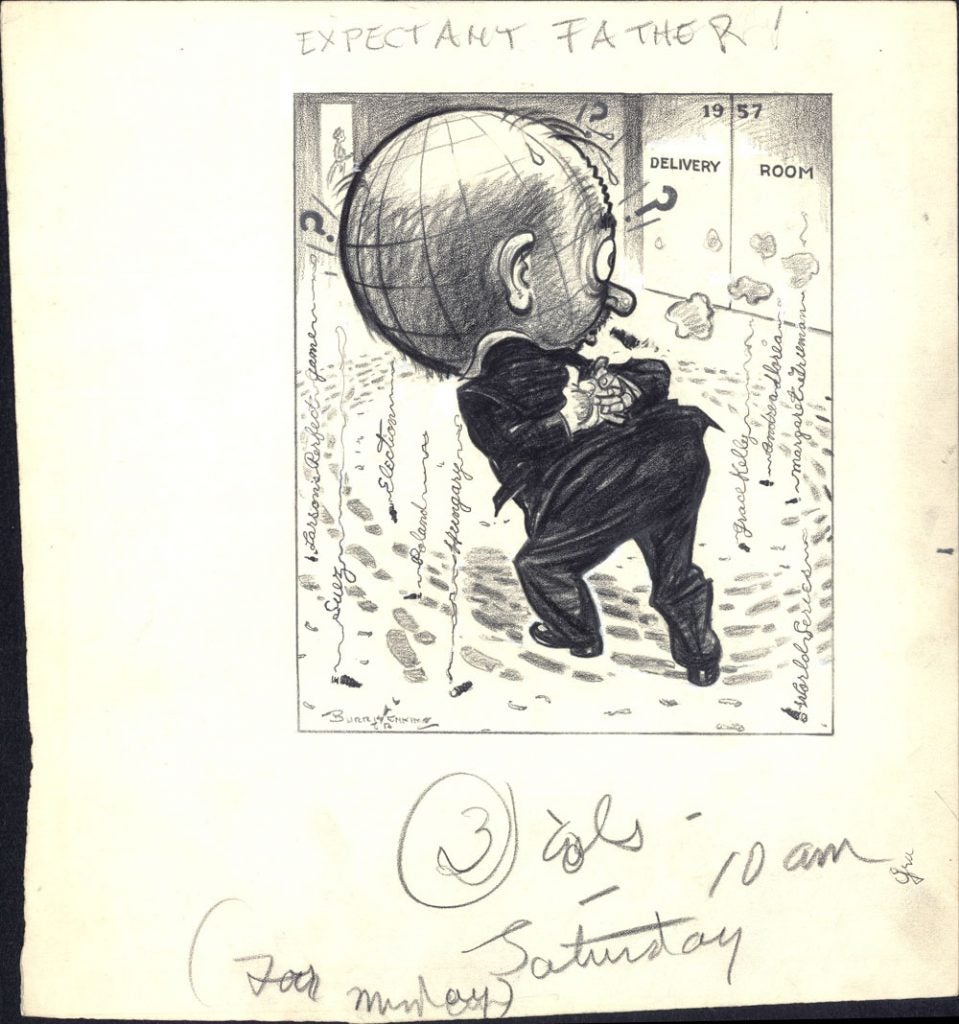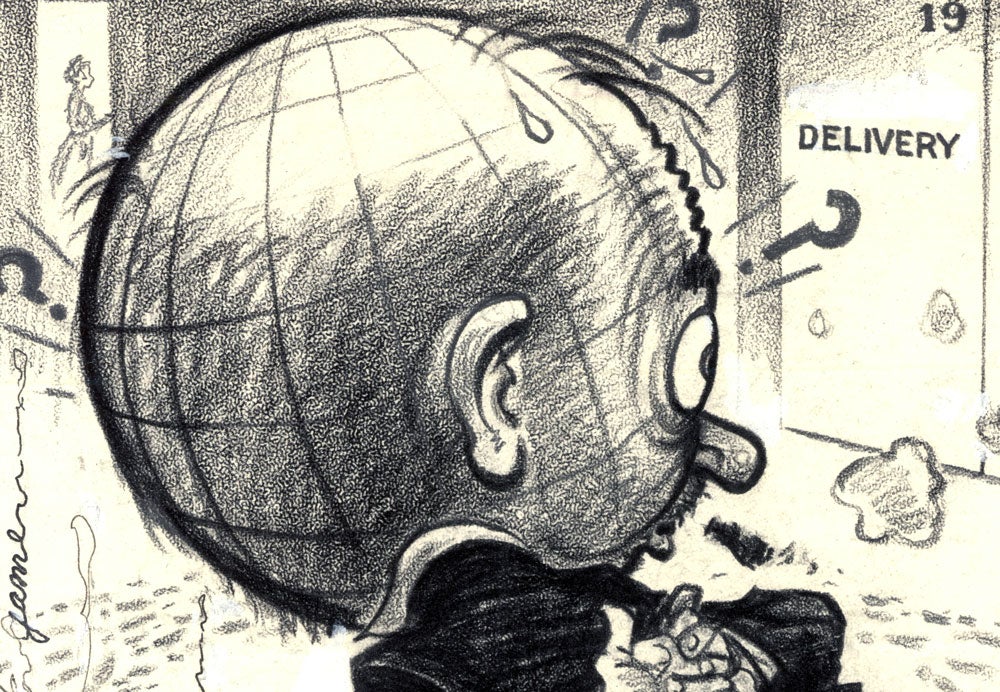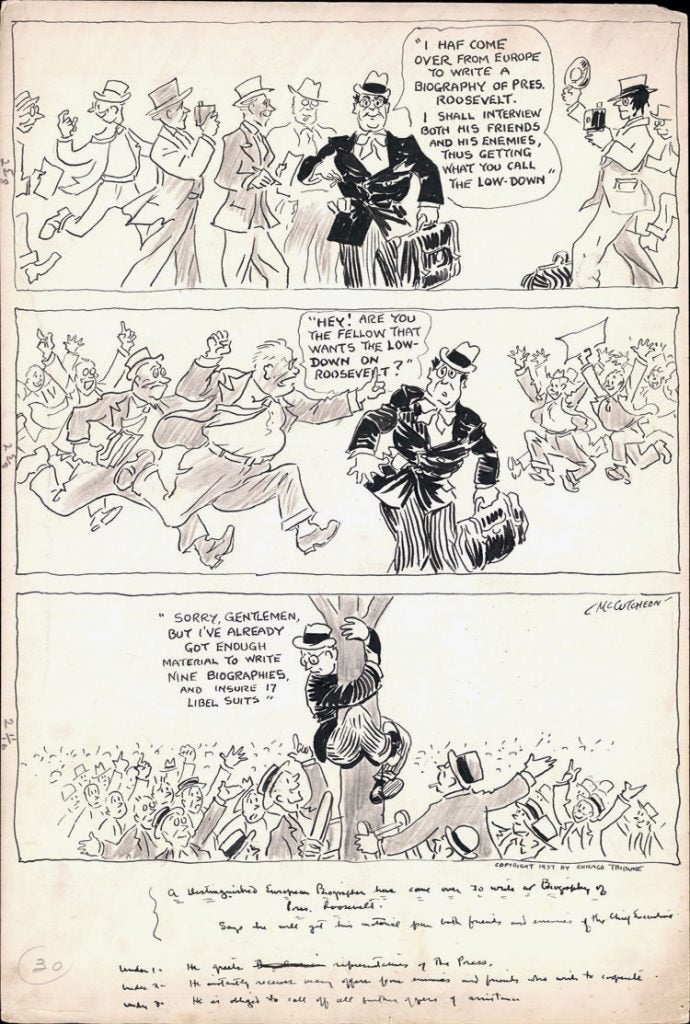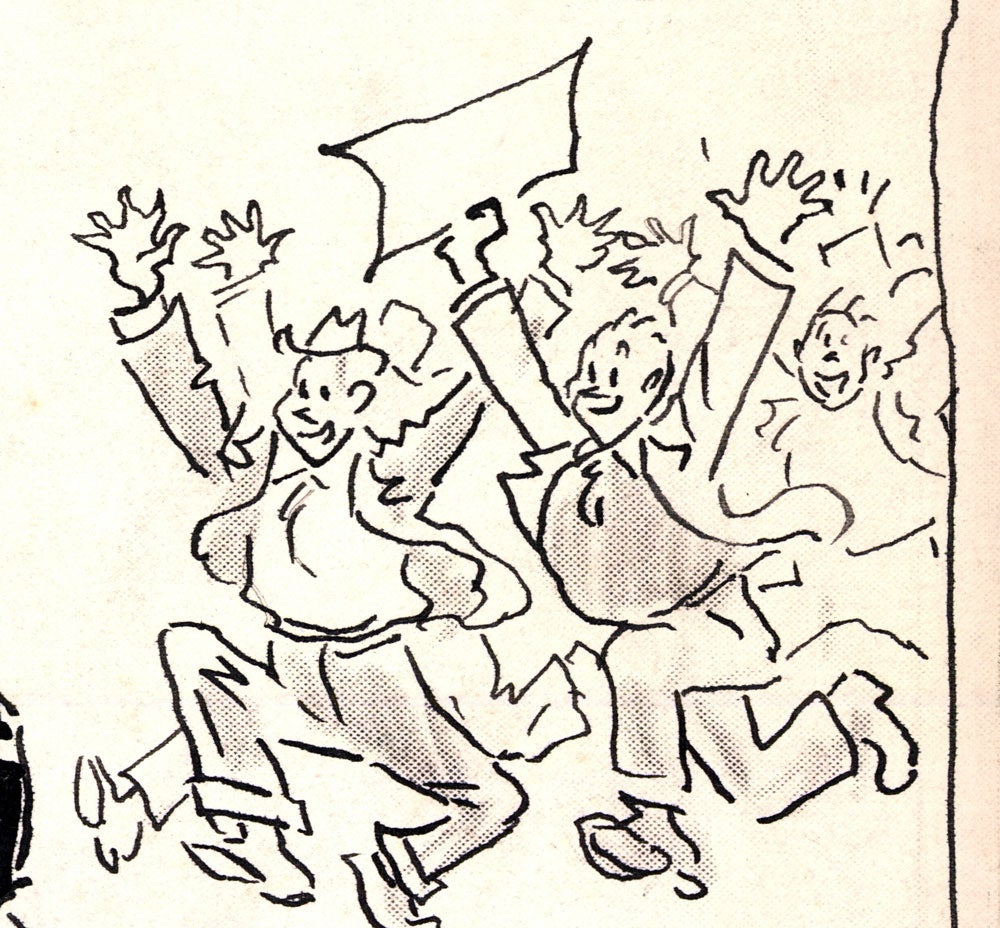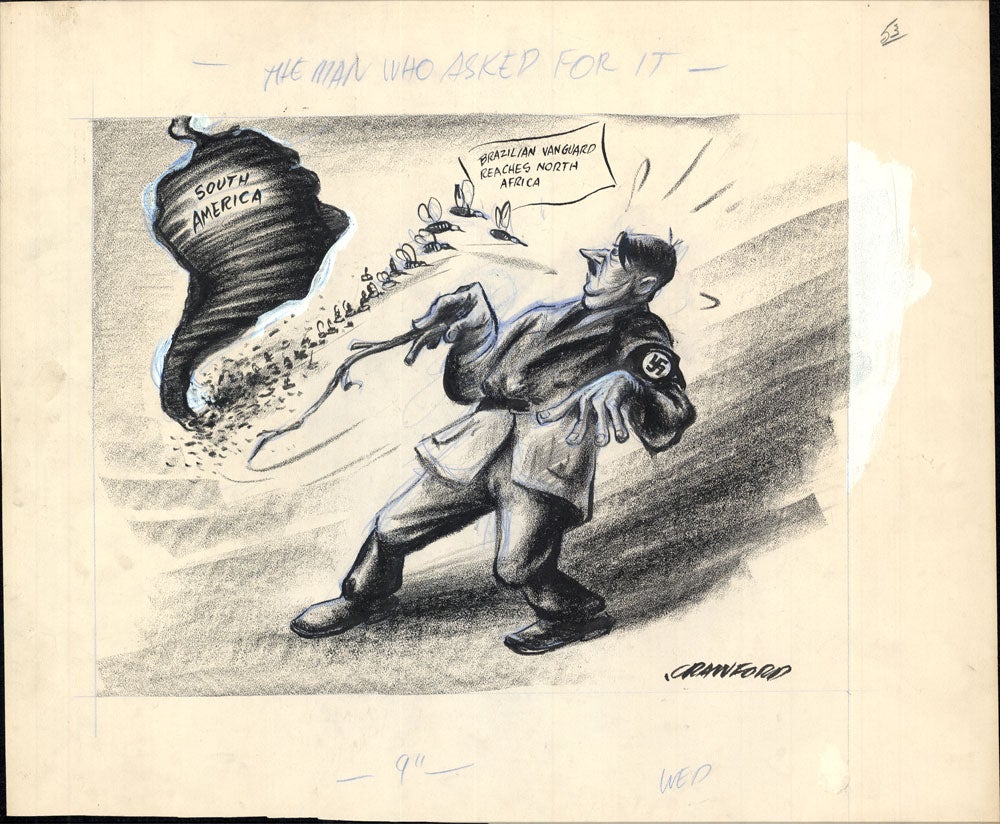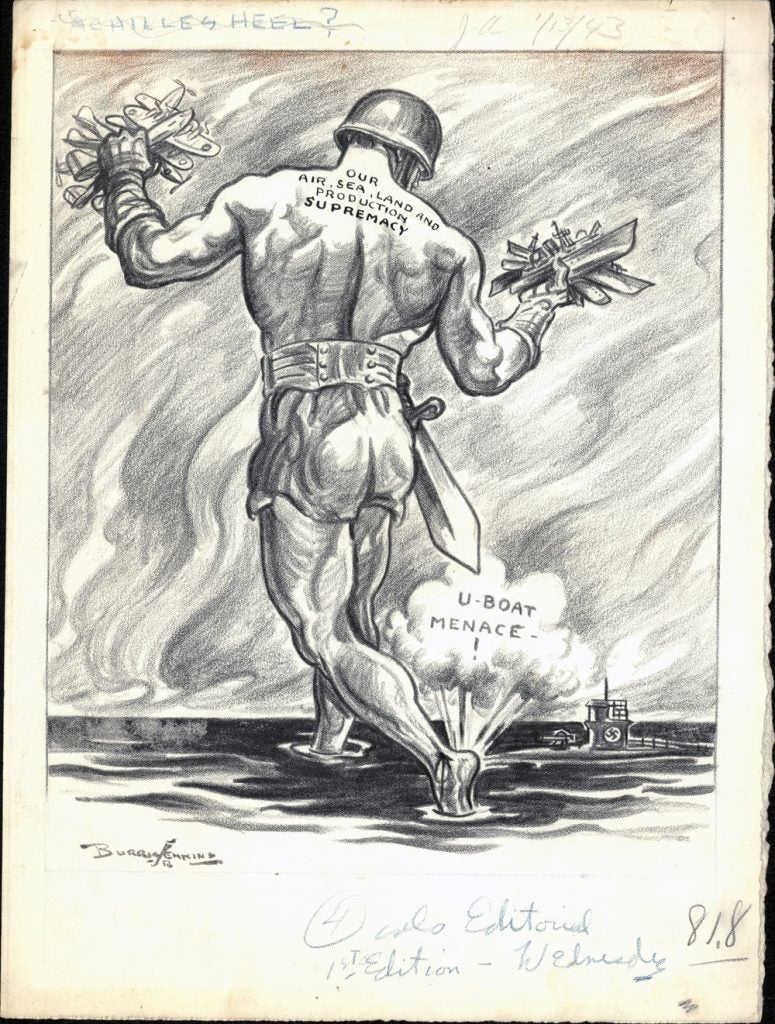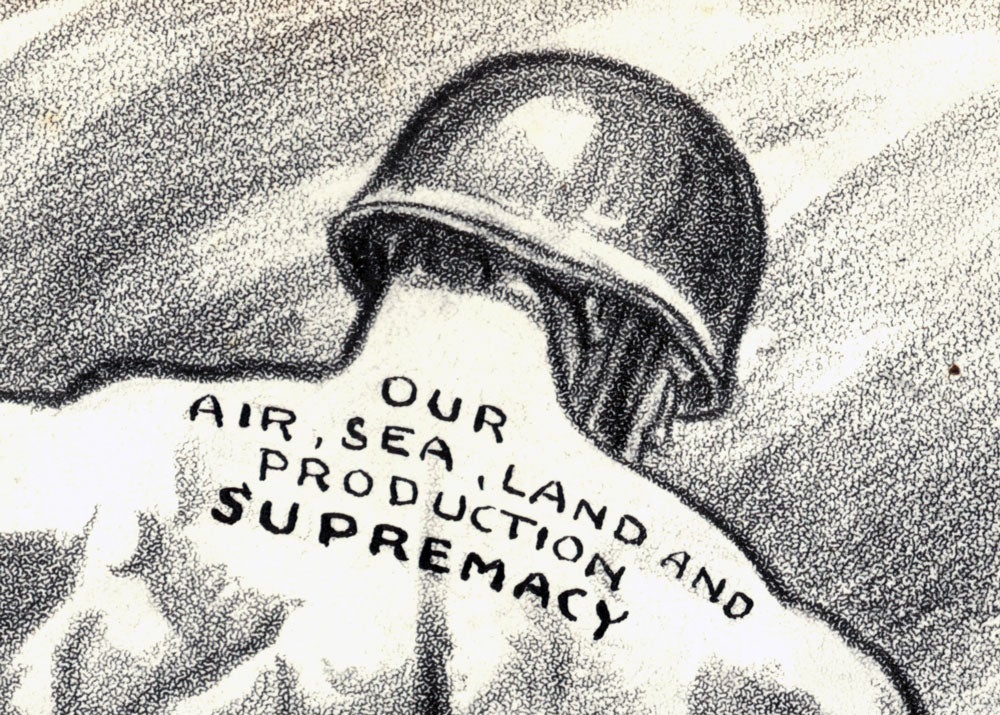
“Army-Navy 1938” (November 26, 1938)
by Emidio (Mike) Angelo (1903-1990)
18 x 19 in., ink on art board
Coppola Collection
Emidio Angelo was born in Philadelphia, a year after his mother and father, a baker, arrived from Italy. He studied art from 1924 to 1928 at the Pennsylvania Academy of the Fine Arts. Angelo joined The Philadelphia Inquirer as a political cartoonist in 1937 and worked there until 1954. He also drew cartoons for the Saturday Evening Post, Life and Esquire.
On May 14, 1938, the English national football team, in its last outing with the German team, was ordered to give the Nazi salute, in what remains today among the most controversial moments in sports history.

On September 30, 1938, British PM Neville Chamberlain arrived at Heston Aerodrome following a conference with Adolf Hitler and other European leaders in Munich. Holding up the recently signed Anglo-German Declaration for the assembled crowd to see, Chamberlain declared that he had secured “peace for our time.” The meetings had resulted in the Munich Agreement, which allowed and legitimized Nazi Germany’s recent annexation of parts of Czechoslovakia. Hitler, who had annexed Austria earlier in the year, had vowed to invade Czechoslovakia on October 1, 1938, to occupy the German-speaking Sudetenland region. And thanks, in part, to his secret pact with the Soviets, he did just that. It was the beginning of the end for Chamberlain.
Throughout the autumn of 1938, Britain was once again on the brink of armed conflict with Germany as the latter’s aggression increased.
November 6, 1938 was Kristallnacht. A wave of violence targeting Jews occurred throughout Germany and Austria in retaliation for the assassination of Ernst vom Rath. Nazi authorities did not interfere as Jewish shops and synagogues were burned and looted, and 20,000 Jews were arrested. Remarkably, that same evening, Swiss citizen Maurice Bavaud attended a parade in Munich celebrating the 15th anniversary of the Beer Hall Putsch with the intention of assassinating Adolf Hitler with a pistol. However, Hitler marched on the far side of the street relative to Bavaud’s position making the shot too difficult, so he abandoned his attempt. A week later, on November 13, Bavaud was caught stowing away on a train in Augsburg. Later, when interrogated by the Gestapo he admitted his plan to assassinate Hitler.
On November 18, 1938, 3,500 members of the motion picture industry attended a “Quarantine Hitler” rally at the Philharmonic Auditorium in Los Angeles. The crowd unanimously voted to send a telegram to President Roosevelt urging him to use his authority to “express further the horror and the indignation of the American people” at the Nazi persecutions of Jews and Catholics.
On November 21, 1938, Neville Chamberlain told the House of Commons of plans to lease at least 10,000 square miles in British Guiana to provide homes for German Jewish refugees
On November 24, 1938, Hitler ordered his military to prepare for an occupation of Danzig.
On November 26, 1938, the Army-Navy Game was played under the shadow of these world events.


